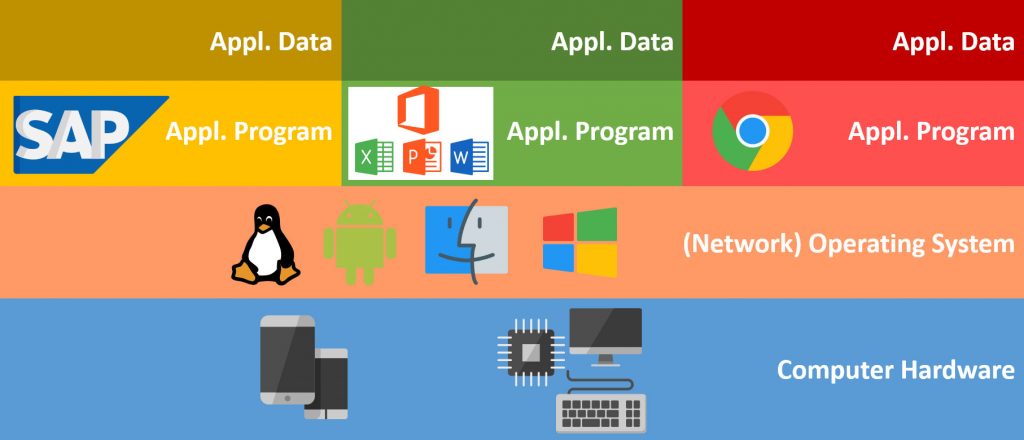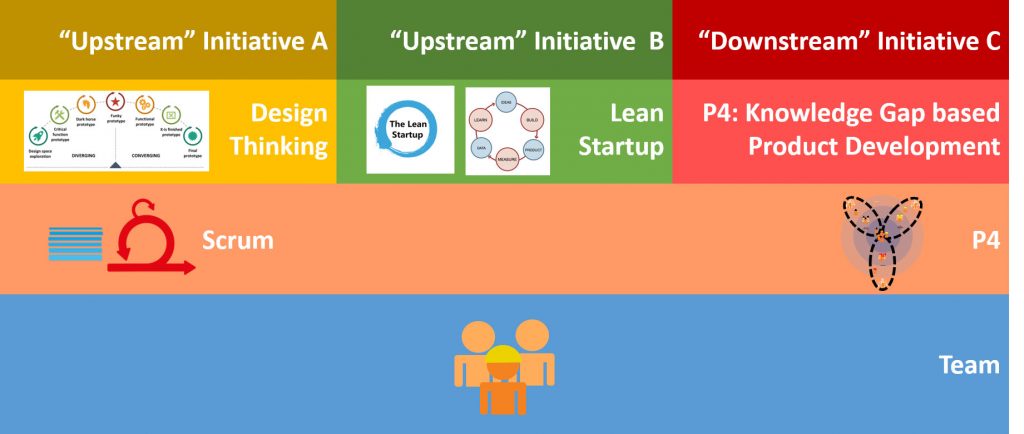Meanwhile, in the world of lean and agile, there are many frameworks, as well as collections of practices and methods, all of which seem to be very different, but have similar or even equal values. In part, they even describe the same things but name them differently. Unfortunately, this creates a lot of confusion for many, which is damaging to the agile movement. In addition, it is often unclear whether the various methods and frameworks can be used alternatively (i.e., exclusively) or combined.
In the following, I would like to try to classify the most widely used frameworks and combine them sensibly within the P4 framework.
In particular, I would like to clarify the role of Scrum. For this I use a metaphor from the computer and IT world:
Here the team represents the computer hardware that carries out the work. Although I don’t like comparing a team with a machine; here, however, it is exceptionally a suitable metaphor. A computer represents an interdisciplinary or cross-functional system with specialized components; in the metaphor represented by the different competencies of the team members.

Scrum is the operating system of the team in this metaphor. It sets the rhythm and priorities for planning and switching between different workflows, just as a computer operating system allocates computing time to the various programs at runtime. Additional tasks are:
- Start and stop application programs (here projects and initiatives)
- Prioritization of those programs
- Communication and synchronization between programs and other computers (other initiatives and teams)
Lean startup and design thinking are application programs that may differ from one initiative to another: they define what’s in the backlog. Scrum defines how it is executed.
There are several benefits to using this approach: Stable teams do not have to think about whether to work with Scrum or Design Thinking or Lean Startup next, as Scrum defines the base structure and keeps it that way.
Also, Design Thinking and Lean Startup complement each other by the fact that Design Thinking describes the principles and methods of prototyping and how Lean Startup describes the principles of how the team can learn with customers and the market as quickly as possible. Design thinking tends to be at a lower level and lean startup at a higher level, not just mutually exclusive, but very complementary.
In addition to the samples (= prototypes), the P4 framework also introduces the concept of knowledge gaps in order to bring together the various elements and, in addition, to take into account product development at later maturities (or phases).

LeSS and SAFe, like the P4 framework, describe a scaling structure of Scrum and Kanban and are therefore also well suited as an operating system for an agile organization. However, these do not deal with the peculiarities of physical product development.
Conclusion: In my opinion, the discussion about Scrum, Design Thinking and Lean Startup is not about the either / or and the when-what, but about the right combination. The P4 framework integrates the various elements and structures as far as possible.
